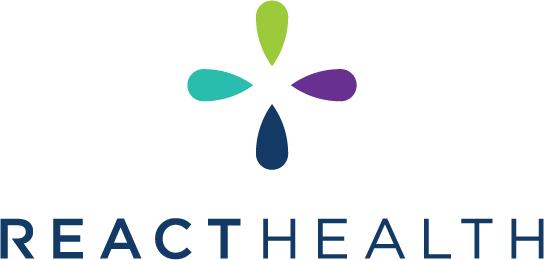Do I Have Sleep Apnea? Recognizing the Signs and Symptoms of This Common Sleep Disorder
Sleep apnea is one of the most prevalent sleep disorders, impacting the quality of life and health of millions of people globally. Despite its prevalence, it often goes undiagnosed, leaving many people unaware of the risks they may face due to untreated sleep apnea. This article examines recent peer-reviewed studies to highlight the symptoms and risk factors associated with sleep apnea, the different types of sleep apnea, and how to recognize when it’s time to seek medical attention.
Table of Contents
- What is Sleep Apnea?
-
Types of Sleep Apnea
- Obstructive Sleep Apnea (OSA)
- Central Sleep Apnea (CSA)
- Complex Sleep Apnea Syndrome
-
Primary Signs and Symptoms of Sleep Apnea
- Nocturnal Symptoms
- Daytime Symptoms
- Risk Factors for Sleep Apnea
- How to Recognize Sleep Apnea: Red Flags from Research
- Self-Assessment Tools and Screening Tests
- The Importance of Diagnosis and Treatment
- Conclusion
- References
1. What is Sleep Apnea?
Sleep apnea is a condition characterized by repeated pauses in breathing during sleep. Each pause, called an "apnea," can last from a few seconds to a minute, causing decreased oxygen levels and often leading to a brief awakening that disrupts sleep. These breathing interruptions reduce the quality of sleep and can lead to serious health problems, including hypertension, heart disease, and diabetes.
2. Types of Sleep Apnea
Recent studies have focused on three primary types of sleep apnea, each with unique causes and presentations.
Obstructive Sleep Apnea (OSA)
OSA is the most common type of sleep apnea, caused by a physical blockage of the upper airway, often due to the relaxation of throat muscles. According to a 2021 study in The Lancet Respiratory Medicine, approximately 85% of sleep apnea cases are classified as OSA. The study highlights that individuals with OSA are at increased risk for cardiovascular diseases and metabolic disorders, particularly if left untreated.
Central Sleep Apnea (CSA)
CSA occurs when the brain fails to send the proper signals to muscles that control breathing. Unlike OSA, CSA is more likely to be associated with underlying medical conditions such as heart failure or stroke. A 2022 review published in Chest noted that CSA is less common than OSA but often presents in patients with chronic health conditions and is more challenging to diagnose due to its different etiology.
Complex Sleep Apnea Syndrome
Also known as treatment-emergent central sleep apnea, this type occurs in patients who initially have OSA but develop CSA after starting continuous positive airway pressure (CPAP) therapy. Research published in Sleep Medicine Reviews in 2022 emphasizes the importance of adjusting treatment in patients with complex sleep apnea, as traditional therapies may exacerbate symptoms in this population.
3. Primary Signs and Symptoms of Sleep Apnea
Recognizing the signs of sleep apnea is crucial to seeking timely treatment. Symptoms are typically divided into nocturnal (nighttime) and daytime symptoms, each affecting daily life and health.
Nocturnal Symptoms
According to a 2020 study in The Journal of Clinical Sleep Medicine, the most common nighttime symptoms of sleep apnea include:
- Loud, Chronic Snoring: Often noted by bed partners, snoring is one of the most frequently reported symptoms of sleep apnea, especially in OSA. This snoring is usually followed by gasping or choking sounds.
- Gasping or Choking During Sleep: Patients may frequently wake up feeling as if they’re choking or gasping for air, which can be alarming and may disrupt sleep cycles.
- Frequent Nighttime Awakenings: People with sleep apnea often wake up multiple times during the night, sometimes without realizing why.
- Restless Sleep and Excessive Movement: Research has shown that individuals with sleep apnea are more likely to toss and turn during the night, often due to breathing difficulties that prevent them from settling into deep sleep stages.
Daytime Symptoms
Daytime symptoms are often less obvious but just as impactful. Studies have highlighted the following as common signs:
- Excessive Daytime Sleepiness (EDS): Research published in 2021 in Sleep Medicine identified EDS as one of the hallmark signs of sleep apnea, affecting concentration, memory, and mood.
- Morning Headaches: Reduced oxygen levels and poor sleep quality are associated with morning headaches, a common complaint among sleep apnea patients.
- Difficulty Concentrating: A 2022 study in Neuropsychology noted that cognitive impairments, including memory issues and poor concentration, are prevalent in untreated sleep apnea patients.
- Mood Disturbances: Depression, irritability, and anxiety have been linked to sleep apnea in several recent studies, as the sleep disruption impacts emotional regulation and stress resilience.
4. Risk Factors for Sleep Apnea
Certain factors increase the likelihood of developing sleep apnea. Understanding these risk factors can help individuals assess their susceptibility and seek medical advice if needed.
- Obesity: Research consistently shows that excess weight is one of the strongest risk factors for OSA, as it increases fatty deposits around the upper airway that may obstruct breathing.
- Age and Gender: Older adults and males are at higher risk, though post-menopausal women also experience higher rates due to hormonal changes, as noted in a 2020 study in The American Journal of Respiratory and Critical Care Medicine.
- Family History: A genetic predisposition to sleep apnea has been identified in several studies, indicating that family history can be a significant risk factor.
- Smoking and Alcohol Use: Both smoking and alcohol consumption can exacerbate symptoms by relaxing throat muscles and increasing inflammation in the airway.
5. How to Recognize Sleep Apnea: Red Flags from Research
Several red flags can indicate a higher likelihood of sleep apnea. A recent meta-analysis in BMC Pulmonary Medicine(2021) summarized the following as major warning signs:
- Frequent loud snoring, especially when accompanied by gasping
- Witnessed apneas or pauses in breathing during sleep
- Waking up with a dry mouth or sore throat
- Experiencing significant daytime fatigue despite adequate sleep duration
6. Self-Assessment Tools and Screening Tests
Recent advances have introduced several tools for self-assessment. The STOP-Bang Questionnaire is a commonly used screening tool that evaluates eight risk factors and has been validated in numerous studies. A 2020 study in Sleep and Breathing found the STOP-Bang questionnaire to be 92% effective in predicting moderate-to-severe OSA, making it a reliable self-assessment tool for those considering seeking a formal diagnosis.
7. The Importance of Diagnosis and Treatment
Untreated sleep apnea can lead to severe health consequences, including cardiovascular disease, stroke, and increased mortality risk. A 2022 longitudinal study published in The Journal of the American Heart Association found that patients with untreated moderate-to-severe sleep apnea were twice as likely to experience a cardiovascular event within ten years compared to those without the disorder. Treatment options, such as CPAP therapy, have been shown to reduce these risks significantly, improving both quality of life and long-term health outcomes.
8. Conclusion
Sleep apnea is a widespread but frequently undiagnosed condition that can have severe health implications if left untreated. Recognizing the symptoms and understanding the risk factors are the first steps toward seeking medical intervention. By staying informed and proactive, individuals can take control of their sleep health and improve their overall well-being.
References
- The Lancet Respiratory Medicine, (2021). "Prevalence of Obstructive Sleep Apnea and Related Health Risks." Lancet Respir Med.
- Chest, (2022). "Central Sleep Apnea and Cardiovascular Risk." Chest Journal.
- Sleep Medicine Reviews, (2022). "Management of Complex Sleep Apnea Syndrome." Sleep Med Rev.
- The Journal of Clinical Sleep Medicine, (2020). "Nocturnal Symptoms in Patients with Obstructive Sleep Apnea." J Clin Sleep Med.
- Sleep Medicine, (2021). "Excessive Daytime Sleepiness in Obstructive Sleep Apnea." Sleep Med.
- Neuropsychology, (2022). "Cognitive Impairment and Sleep Apnea." Neuropsychology Journal.
- The American Journal of Respiratory and Critical Care Medicine, (2020). "Risk Factors in Post-Menopausal Women." Am J Respir Crit Care Med.
- BMC Pulmonary Medicine, (2021). "Major Warning Signs of Sleep Apnea." BMC Pulm Med.
- Sleep and Breathing, (2020). "Effectiveness of STOP-Bang Questionnaire." Sleep Breath.
- The Journal of the American Heart Association, (2022). "Cardiovascular Risks Associated with Untreated Sleep Apnea." JAHA.








Leave a comment
This site is protected by hCaptcha and the hCaptcha Privacy Policy and Terms of Service apply.